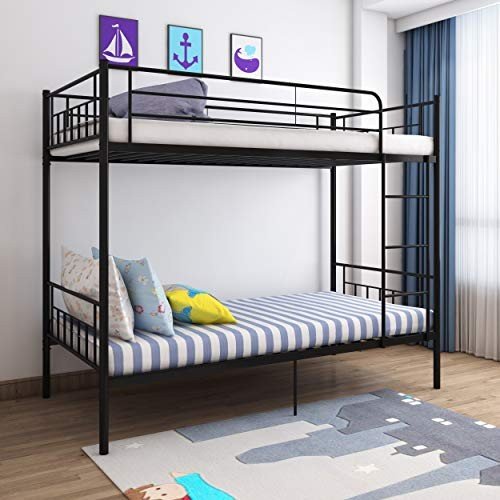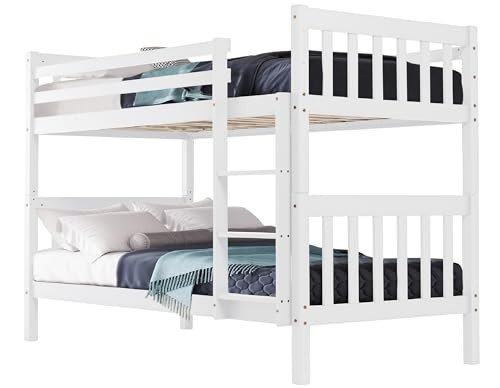The Ultimate Guide to Bunk Beds for Children: Safety, Styles, and Benefits
When it comes to styling a child's room, parents often deal with the double challenge of making the most of space while making sure comfort and functionality. Bunk beds have actually become a popular option that deals with these requirements, offering not just sleeping plans but also adding to a space's visual. In this comprehensive guide, we will look into various elements of kids's bunk beds, concentrating on their benefits, safety features, designs, and considerations for parents contemplating this purchase.

Table of Contents
- Advantages of Bunk Beds
- Safety Features to Consider
- Kinds Of Bunk Beds
- Style and Style Options
- Maintenance Tips
- Often Asked Questions (FAQs)
1. Advantages of Bunk Beds
Bunk beds provide various benefits for children and their moms and dads. Here are some crucial advantages:

Space-Efficiency: bunk beds children's beds are an excellent solution for smaller sized spaces. By stacking one bed on top of another, more flooring space is offered for play, storage, or study areas.
Affordable: When kids share spaces, bunk beds can minimize the requirement for purchasing 2 separate beds, thus saving cash.
Fosters Social Interaction: Bunk beds can assist siblings or good friends bond by sharing a space, developing opportunities for social development.
Fun Factor: The idea of sleeping "up high" adds a lively aspect to bedtime, making the transition to sleeping alone easier for some kids.
Versatile Design: Bunk beds are available in various designs, colors, and designs to match any space theme, enabling customization that shows the kid's personality.
2. Safety Features to Consider
Safety is vital when it pertains to children's furnishings, specifically when it comes to bunk beds. Here are some crucial security features to examine:
| Safety Feature | Description |
|---|---|
| Strong Construction | Frames made of solid wood or metal are preferred. |
| Guardrails | Must be at least 5 inches high and extend along both sides of the upper bunk. |
| Ladder Design | Ensure ladders are firmly connected and have non-slip steps. |
| Mattress Size & & Fit | Must fit comfortably within the frame to avoid spaces. |
| Weight Limit | Constantly adhere to the maker's weight limit suggestions. |
3. Types of Bunk Beds
Bunk beds come in a number of styles, dealing with various requirements, preferences, and room sizes. Here are some typical types:
Standard Bunk Bed: The most fundamental type, with one bed on top of another.
Loft Bed: Features a high upper bed with space underneath for a desk or play area.
Futon Bunk Bed: Combines a leading bunk with a futon on the bottom, offering versatility for seating and sleeping.
L-Shaped Bunk Bed: This design has the top bunk set at a perpendicular angle to the bottom, creating a little corner location.
Triple Bunk Bed: Accommodates three children using stacked beds, ideal for large households or sleepovers.
4. Design and Style Options
When it pertains to choosing a style for children's bunk beds, the choices are practically limitless. Here are some popular styles:
Traditional Style: Often made of wood, these bunk beds include ornate information and are perfect for classic or rustic-themed rooms.
Modern Style: Characterized by clean lines and minimalist designs, modern bunk beds can be made from metal or wood.
Themed Bunk Beds: Some brands offer bunk beds formed like castles, cars, or play houses, making bedtime less of a task.
Convertible Bunk Beds: These can be separated into two private beds, providing versatility as children grow.
Colorful Options: Bunk beds in lively colors can include a sense of delight and playfulness to any room.
5. Upkeep Tips
Preserving a bunk bed is vital for durability and security. Here are some ideas:
Regular Inspections: Check for loose screws or bolts every couple of months and tighten them as required.
Cleaning up: Wipe down frames frequently to avoid dust accumulation; think about utilizing a vacuum for hard-to-reach locations.
Mattress Care: Rotate bed mattress routinely and use protective covers to extend their life.
Expect Wear and Tear: Look for any signs of damage in the wood or metal and consider replacing parts if required.
Teach Kids Safety Rules: Encourage kids to use ladders correctly and guarantee they understand the safety features of their bed.
6. Often Asked Questions (FAQs)
Q1: What age is proper for sleeping in a leading bunk?
A1: Typically, children aged 6 and older are suggested for upper bunk sleeping, as they have the necessary motor abilities to climb safely.
Q2: Do bunk beds come with a bed mattress?
A2: Most bunk beds are sold as frames only, so you will need to buy mattresses independently. Guarantee that the bed mattress fits the frame snugly.
Q3: Can bunk beds be separated later?
A3: Many styles enable conversion into 2 individual beds, providing versatility for future needs.
Q4: How can I guarantee my kid's safety on a bunk bed?
A4: Comply with safety standards and ensure guardrails, a sturdy frame, and a protected ladder remain in location.
Q5: Are there weight limits on bunk beds?
A5: Yes, constantly inspect the producer's specs concerning weight limitations to make sure security.
Bunk beds for children can serve multiple purposes while ensuring safety and style. With varied designs and designs readily available on the marketplace, parents can find a system that not just maximizes bedroom space however likewise reflects their kid's special tastes. As with any furniture, comprehending security features, maintenance, and how they suit a kid's lifestyle will guarantee that these beds stay a useful furnishings service for several years to come.
Through cautious factor to consider and adherence to safety guidelines, bunk beds can supply a long-lasting, enjoyable, and practical sleeping option that children like.








